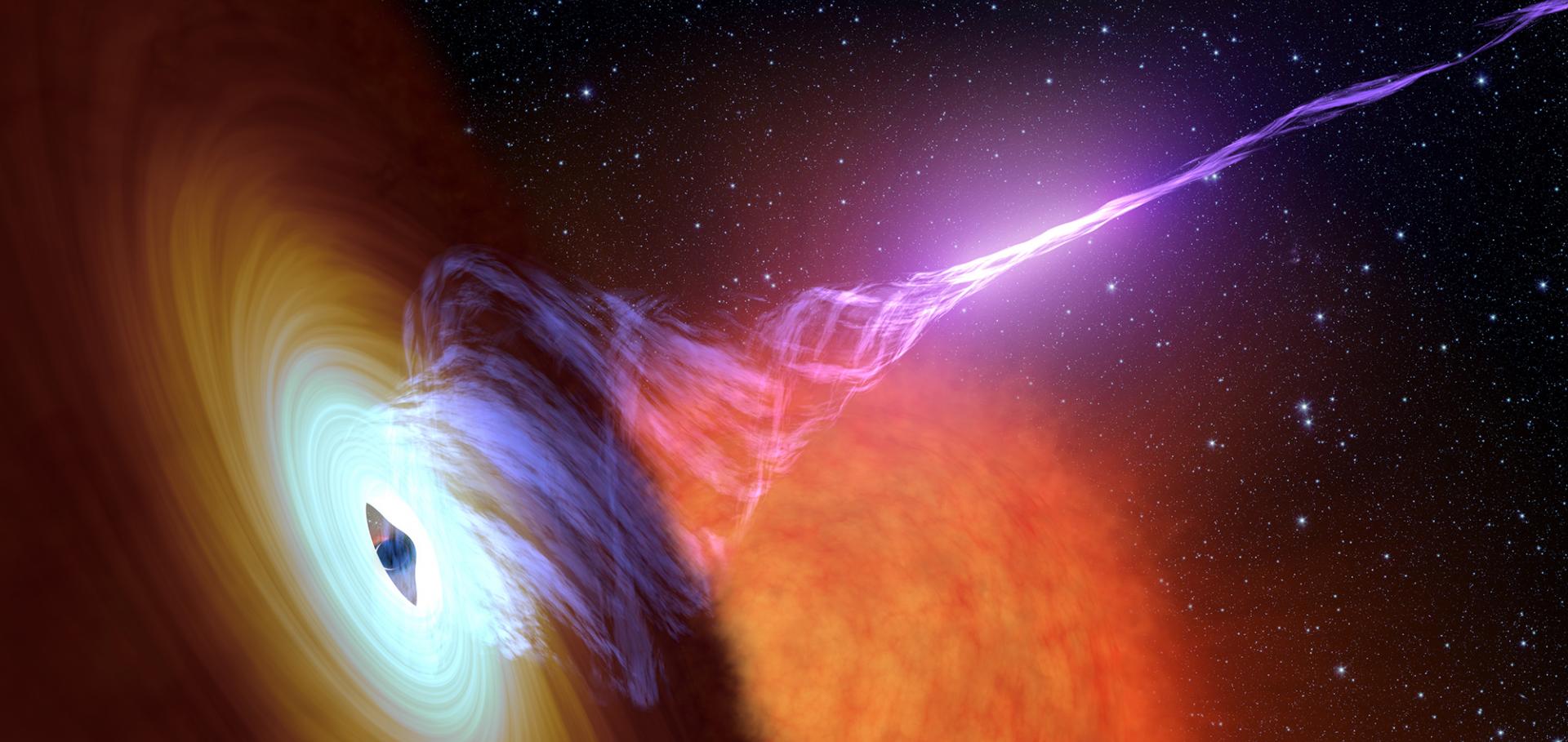Jets from black hole X-ray binaries: Testing, refining and extending empirical models for the coupling to X-rays
Monthly Notices of the Royal Astronomical Society 396:3 (2009) 1370-1382
Abstract:
In this paper we study the relation of radio emission to X-ray spectral and variability properties for a large sample of black hole X-ray binary systems. This is done to test, refine and extend - notably into the timing properties - the previously published 'unified model' for the coupling of accretion and ejection in such sources. In 14 outbursts from 11 different sources we find that in every case the peak radio flux, on occasion directly resolved into discrete relativistic ejections, is associated with the bright hard to soft state transition near the peak of the outburst. We also note the association of the radio flaring with periods of X-ray flaring during this transition in most, but not all, of the systems. In the soft state, radio emission is in nearly all cases either undetectable or optically thin, consistent with the suppression of the core jet in these states and 'relic' radio emission from interactions of previously ejected material and the ambient medium. However, these data cannot rule out an intermittent, optically thin, jet in the soft state. In attempting to associate X-ray timing properties with the ejection events we find a close, but not exact, correspondence between phases of very low integrated X-ray variability and such ejections. In fact the data suggest that there is not a perfect one-to-one correspondence between the radio, X-ray spectral or X-ray timing properties, suggesting that they may be linked simply as symptoms of the underlying state change and not causally to one another. We further study the sparse data on the reactivation of the jet during the transition back to the hard state in decay phase of outbursts, and find marginal evidence for this in one case only. In summary we find no strong evidence against the originally proposed model, confirming and extending some aspects of it with a much larger sample, but note that several aspects remain poorly tested. © 2009 RAS.Linking jet emission and X-ray properties in the peculiar neutron star X-ray binary Circinus X-1
Monthly Notices of the Royal Astronomical Society 399:1 (2009) 453-464
Abstract:
We present the results of simultaneous X-ray and radio observations of the peculiar Z-type neutron star X-ray binary Cir X-1, observed with the Rossi X-ray Timing Explorer satellite and the Australia Telescope Compact Array in 2000 October and 2002 December. We identify typical Z-source behaviour in the power density spectra as well as characteristic Z patterns drawn in an X-ray hardness-intensity diagram. Power spectra typical of bright atoll sources have also been identified at orbital phases after the periastron passage, while orbital phases before the periastron passage are characterized by power spectra that are typical neither of Z nor of atoll sources. We investigate the coupling between the X-ray and the radio properties, focusing on three orbital phases when an enhancement of the radio flux density has been detected, to test the link between the inflow (X-ray) and the outflow (radio jet) to/from the compact object. In two out of three cases, we associate the presence of the radio jet to a spectral transition in the X-rays, although the transition does not precede the radio flare, as detected in other Z sources. An analogous behaviour has recently been found in the black hole candidate GX 339-4. In the third case, the radio light curve shows a similar shape to the X-ray light curve. We discuss our results in the context of jet models, considering also black hole candidates. © 2009 RAS.On the variation of black hole accretion disc radii as a function of state and accretion rate
Monthly Notices of the Royal Astronomical Society 396:3 (2009) 1415-1440
Abstract:
In response to major changes in the mass accretion rate within the inner accretion flow, black hole binary transients undergo dramatic evolution in their X-ray timing and spectral behaviour during outbursts. In recent years a paradigm has arisen in which 'soft' X-ray states are associated with an inner disc radius at, or very close to, the innermost stable circular orbit (ISCO) around the black hole, while in 'hard' X-ray states the inner edge of the disc is further from the black hole. Models of advective flows suggest that as the X-ray luminosity drops in hard states, the inner disc progressively recedes, from a few gravitational radii (Rg) at the ISCO, to hundreds of Rg. Recent observations which show broad iron line detections and estimates of the disc component strength suggest that a non-recessed disc could still be present in bright hard states. In this study we present a comprehensive analysis of the spectral components associated with the inner disc, utilizing bright states data from X-ray missions with sensitive low-energy responses (e.g. Swift, SAX), including re-analyses of previously published results. A key component of the study is to fully estimate systematic uncertainties associated with such spectral fits. In particular we investigate in detail the effect on the measured disc flux and radius of having a hydrogen column density that is fixed or free to vary. We conclude that at X-ray luminosities above ∼0.01 of the Eddington limit, systematic uncertainties only allow us to constrain the disc to be ≲10Rg from spectral fits. There is, however, clear evidence that at X-ray luminosities between 10-2 and 10-3 of the Eddington rate, the disc does begin to recede. We include measurements of disc radii in two quiescent black hole binaries at bolometric luminosities of <10-7 Eddington, and present the inferred evolution of disc luminosity, temperature, inner radius and accretion rate/efficiency across the entire range of bolometric luminosities 10-8-1 Eddington. We compare our results with theoretical models, and note that the implied rate of disc recession with luminosity is consistent with recent empirical results on the X-ray timing behaviour of black holes of all masses. © 2009 RAS.The LOFAR Transients Key Project
PoSMQW 6 (2009) 104-104
Abstract:
LOFAR, the Low Frequency Array, is a new radio telescope under construction in the Netherlands, designed to operate between 30 and 240 MHz. The Transients Key Project is one of the four Key Science Projects which comprise the core LOFAR science case. The remit of the Transients Key Project is to study variable and transient radio sources detected by LOFAR, on timescales from milliseconds to years. This will be achieved via both regular snapshot monitoring of historical and newly-discovered radio variables and, most radically, the development of a `Radio Sky Monitor' which will survey a large fraction of the northern sky on a daily basis.The disc-jet coupling in the neutron star X-ray binary Aquila X-1
Monthly Notices of the Royal Astronomical Society 400:4 (2009) 2111-2121


